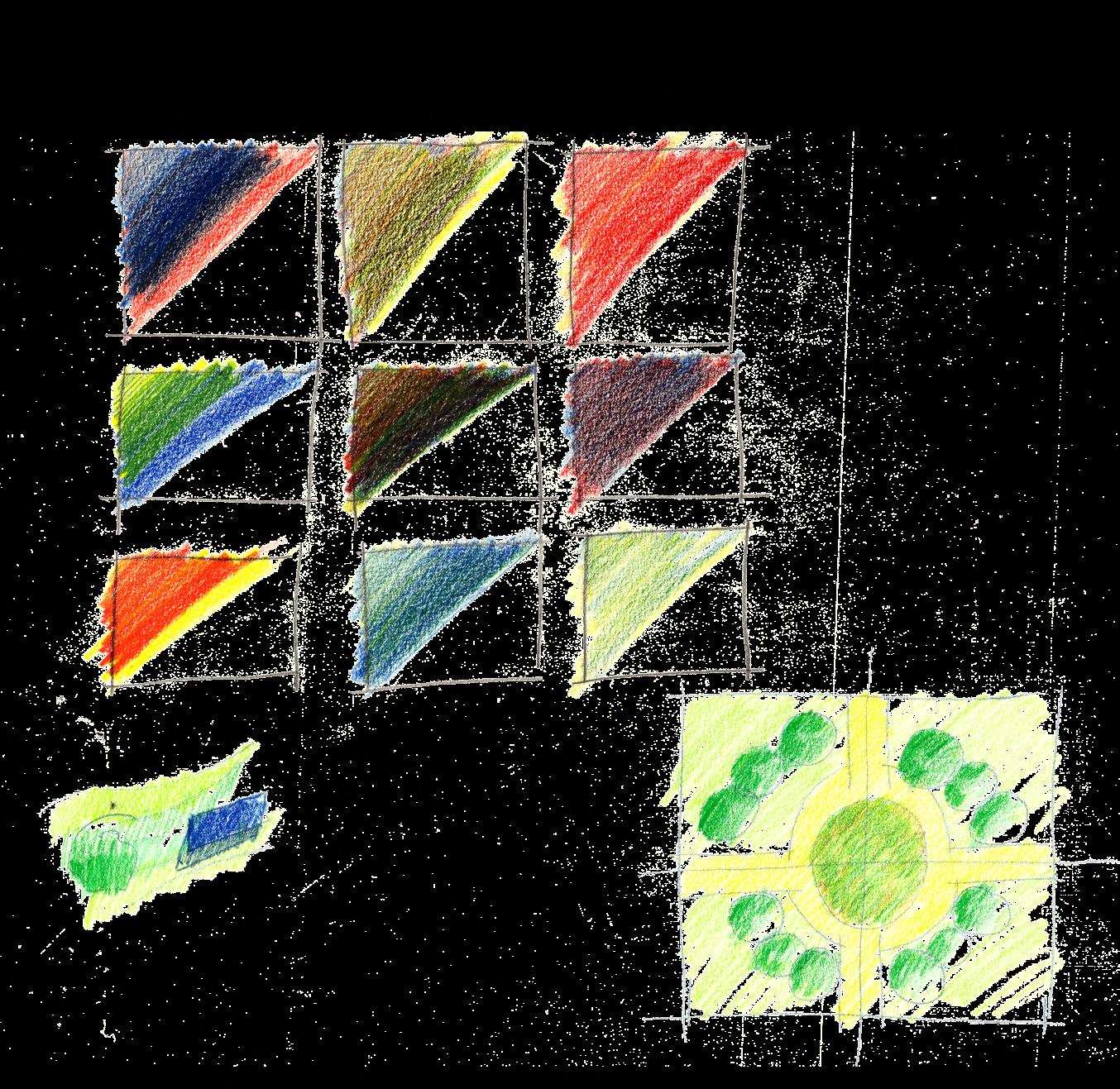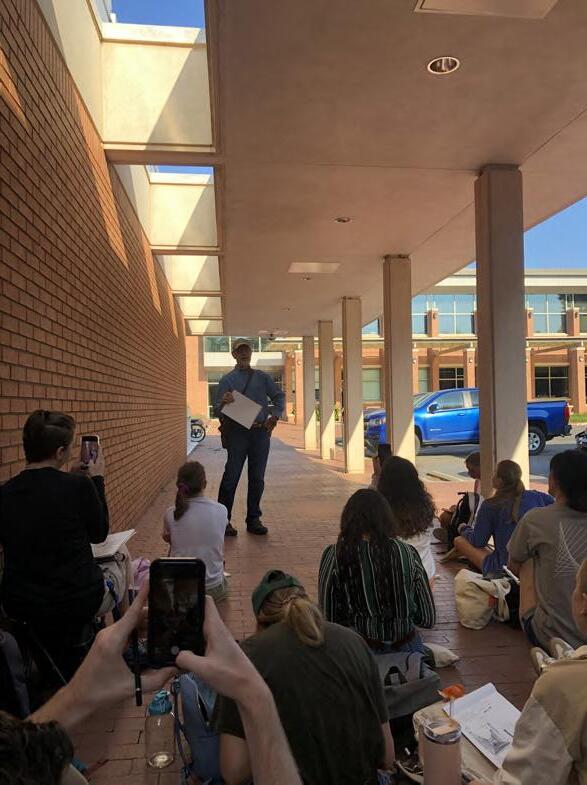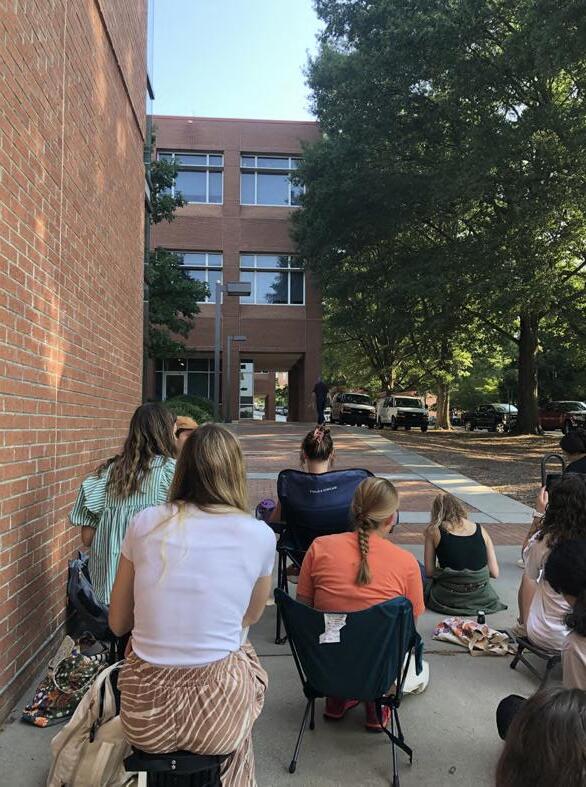
Matthew Ngango ARCHB 4990/6990 Freehand Drawing


Matthew Ngango ARCHB 4990/6990 Freehand Drawing
Fall 2024
Clemson University
School of Architecture
ARCH 6690 Freehand Drawing: Tools, Techniques, Methods
Instructor: Emeritus Prof. Lynn Craig, FAIA, RIBA
Fall 2024

This course introduced me to various drawing tools and techniques that allowed me to capture and record architectural and landscape environments effectively. I learned to use these tools not only to create visual representations but also to deepen my understanding of a place’s character. By focusing on materiality, shadows, light, color, and spatial qualities, I developed a heightened ability to retain and convey the essence of these environments.


We explored five tools: carbon pencils, watercolor, pen and ink, oil pastel with black brush pen, and Prismacolor pencils. I later developed mixed-media techniques, like combining pen and ink with watercolor or Prismacolor, to create more dynamic works.












The architecture and landscapes in this portfolio feature scenes from Clemson University, with additional drawings from my travels to New York City, Boston, and a venue in Anderson.
forecourt at Fluor
Hall in Clemson features a series of trees providing shade, set against the backdrop of a busy road.

Using carbon pencils provided a quick and effective way to achieve tonal variations, thanks to the range of pencil hardness. They made it easy to add details, combining fine lines and textures with tone and shading. This versatility allowed for both realistic representations and quick sketches.

Sketching is a valuable tool for studying spaces, capturing their form, scale, and essence while deepening spatial understanding.

A wedding venue courtyard showcasing a rich interplay of textures, including brick, stone, stucco, and lush vegetation


Layers of watercolor capture the dramatic effect of the pond at the heart of Clemson University

Watercolor provides a quick color rendering solution, ideal for capturing transparency and reflection through the use of water on paper. However, I have to remember to use water proof ink to retain the quality of lines drawn before applying watercolor.

I used watercolor to express the transparency of the glazed sections of the Marino Recreation Center at Northeastern University and Boston Logan International Airport



Through layers of watercolor, I aimed to express the continuity of the visual connection between the exterior and interior of the Lee Hall III’s glazed South and North-facing walls

I explored hatching techniques in a drawing of Winyah Bay from The George in Georgetown, SC

I found that pen and ink tools required a higher level of detail, but quick texture techniques like hatching allowed for fast creation of shadows and depth. Using markers like Sharpies made this process easier




I enjoyed using a water brush to smudge ink and quickly create tones. Adding color, especially with Prismacolor pencils, helped highlight key aspects of the drawing. I learned to use waterproof ink in areas where I planned to add watercolor.


I also found that adding color to pen and ink drawings is a great way to reveal hidden details.
A quick sketch of the Watt Family Innovation Center courtyard, part of a series of courtyards in Clemson University’s master plan layout strategy.

Using oil pastels and a black brush pen offers the quickest sketching and rendering techniques. The brush pen’s thickness and softness keeps drawings loose with minimal details, while oil pastels, though messy, saves time by easily smudging across the paper.

A series of quick sketches capturing the Watt Family Innovation Center courtyard.





Prismacolor pencils have been my favorite tool, offering control and easy layering. Their ability to create tones and textures is excellent, and using unidirectional strokes keeps sketches clean and readable.

Two-point perspective sketch at the Fluor Daniel Hall atrium


Sketch of the Lee II entrance, showcasing the power of one-point perspective to draw the eye’s focus



Robert Muldrow Cooper Library and the outdoor amphitheater: a place of knowledge, entertainment, and identity

I developed a technique of layering Prismacolor pencils over a watercolor base, adding texture and richness to the drawing


Sequential drawings of the Scroll of Honor
